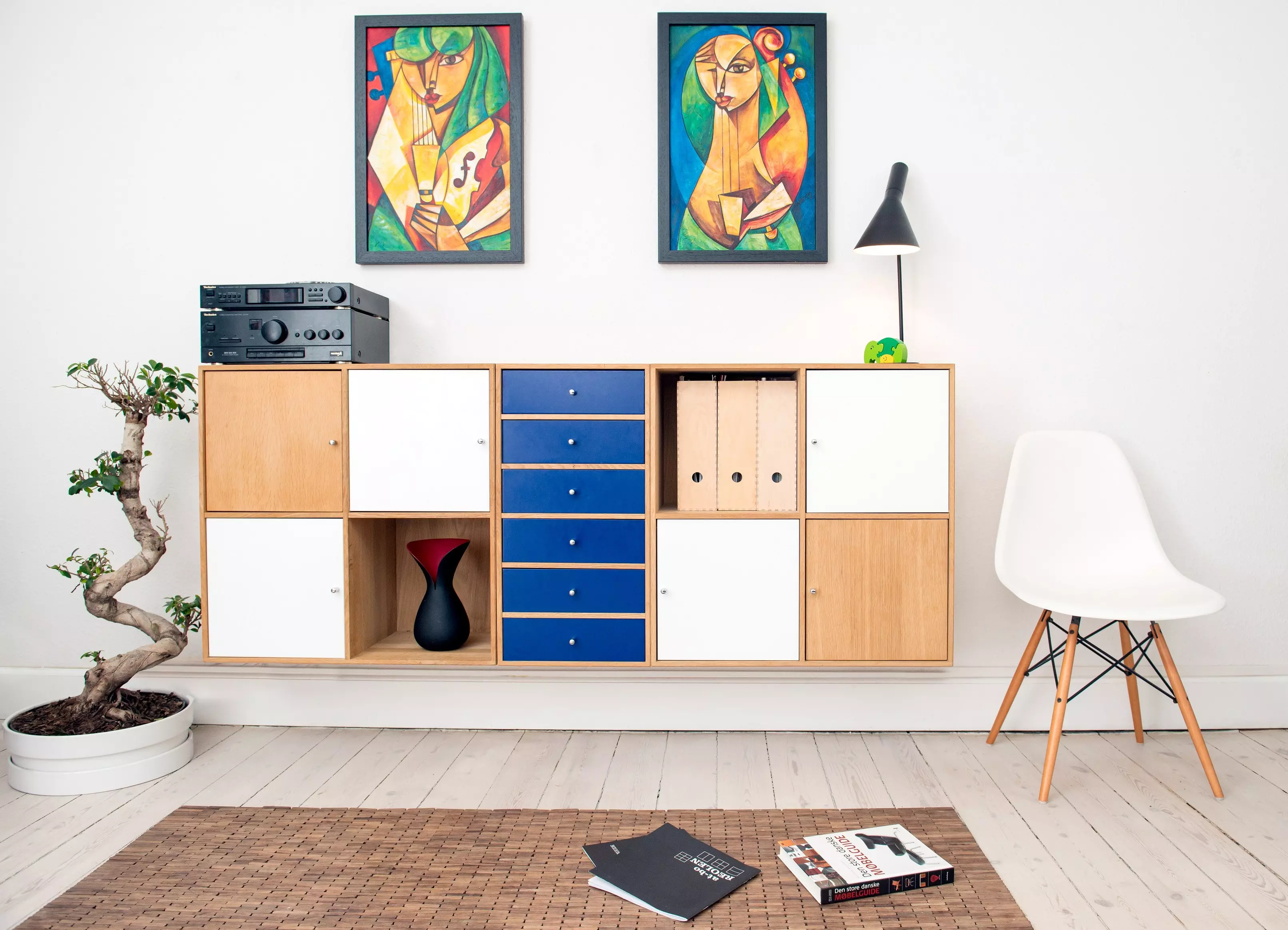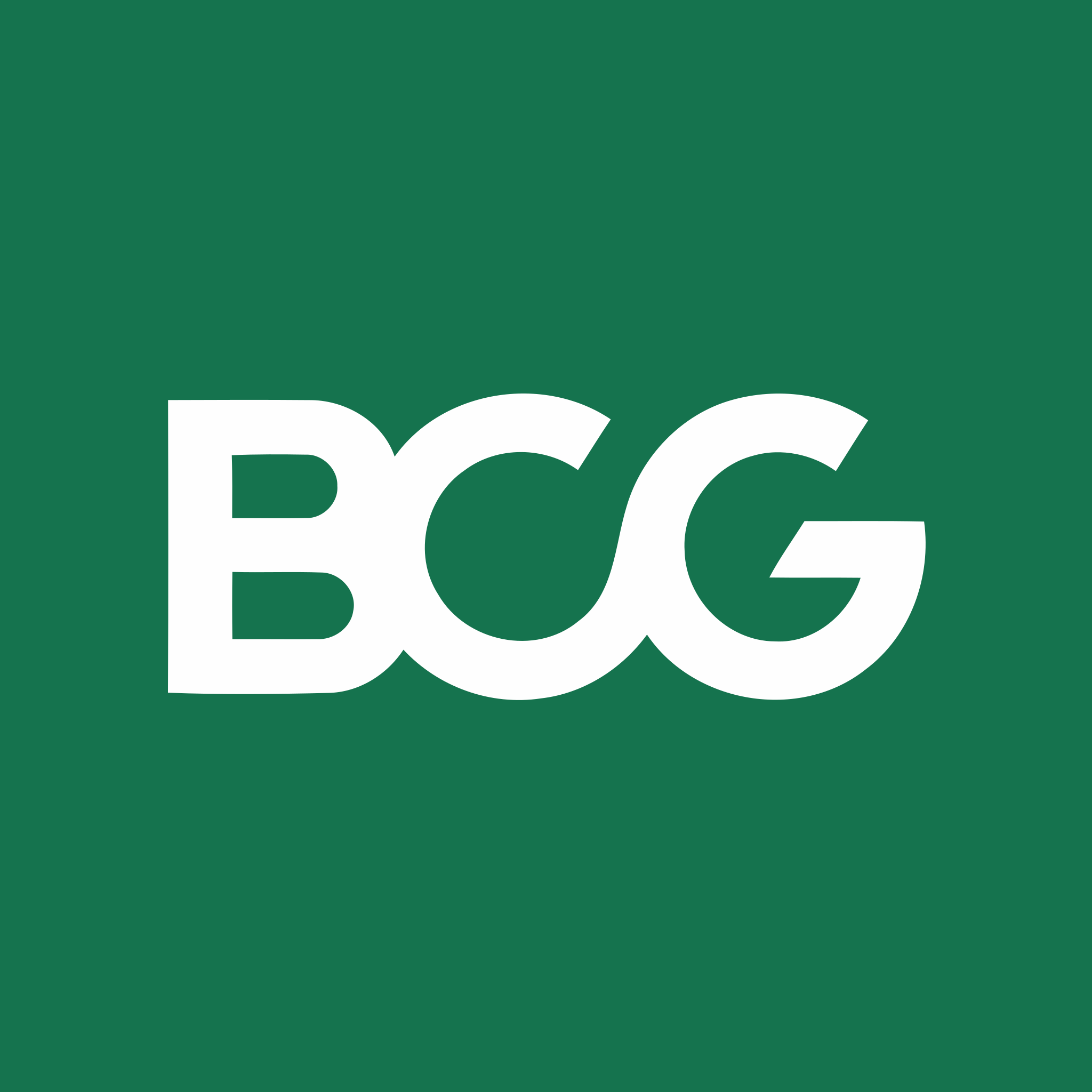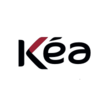Detailed content of our market study
 Inforamtion
Inforamtion
- Number of pages : 35 pages
- Format : Digital and PDF versions
- Last update :
 Summary and extracts
Summary and extracts
1 Market Summary
1.1 Definition and presentation
The global furniture market, estimated at $641.80 billion in 2024, is confirmed as one of the most dynamic and evolving sectors in the world economy. This sector includes a wide range of products, from living room and bedroom furniture to specialized solutions for bathrooms and kitchens. Forecasts indicate a compound annual growth rate(CAGR) of 5.29 percent between 2024 and 2029, with an expected valuation of more than $830 billion by the end of the period. Geographically, the United States dominates the market with a 27.7 percent share, followed byEurope (23.4 percent), while the remaining 48.9 percent is divided among other areas of the world. The sector's growth is supported by key factors such as urbanization, rising disposable income, and an increased focus on design and sustainability trends.
Europe, with a market estimated at $149.79 billion in 2024, stands out for its high manufacturing standards and strong export vocation, driven by nations such as Germany and Italy. The latter, in particular, represents one of the sector's excellences with production exceeding 26 billion euros, despite a slight contraction following the peak recorded in 2022. Italy stands out for its ability to combine traditional craftsmanship and innovation, maintaining a competitive positioning at the international level. Domestic demand is unevenly distributed, with Northern Italy recording the highest consumption, while the South and Islands show lower growth potential.
On the supply side, the Italian furniture sector is evolving in response to market needs, with an increase in product variety and a growing focus on sustainability. Emerging trends include the boom in second-hand furniture, the increasing use of recycled and certified materials, and the introduction of eco-friendly solutions, in line with the demand of an increasingly environmentally conscious consumer. The balance between tradition and innovation, combined with the ability to adapt quickly to market changes, confirms Italy as one of the leaders in the global furniture scene.
Analyst's comment
The global furniture market is in a transitional phase, with demand no longer driven only by aesthetics and functionality, but also by sustainability and the digitization of the sector. The future of manufacturing will increasingly shift toward models based on the circular economy and product customization, thanks to the use of advanced technologies such as AI and 3D printing. For Italian manufacturers, the competitive advantage lies in the ability to integrate these new trends while maintaining the distinctive value of design and quality craftsmanship.
1.2 The global market
In ****, the world home furniture market is estimated at $***.** billion. Good growth in the industry is expected in the near future. A compound annual growth rate (***) of *.**% is estimated for the period ****-****, thanks to which the market could reach a total value of more than $*** billion by the end of the period.
Home furniture market World, ****-****, in billions of dollars MordorIntelligence
As for the market breakdown among the different product types, in **** living and dining room furniture garners ** percent of the total value. This is followed by bedroom furniture with ** percent and home decor also with ** percent. Kitchen furniture stands at ** percent as does the lamp and lighting segment. Furniture market, breakdown by product type World, ****, % ICE
The U.S. home furniture market shows steady growth from **** to ****, rising from $***.** billion to $***.** billion, an overall increase of **% at a CAGR of *.**%. Value of the U.S. home furniture market US, ****-****, in US$ billion GrandViewResearch
In ****, the global home furniture market sees the United States accounting for **.* percent of the total value, followed by Europe with **.* percent, with the remaining **.* percent attributed to the rest of the world. This shows a balanced distribution, with a slight dominance of non-Western ...
1.3 The European market
The European home furniture sector represents one of the most significant components of the global market. In ****, the total value is estimated at $***.** billion, with growth forecasts indicating a compound annual growth rate (***) of *.** percent. If this trend is confirmed, by **** the market could reach nearly $*** billion, driven by evolving consumer preferences and innovation in design and materials.
Home furniture market Europe, ****-****, in billions of dollars MordorIntelligence
In ****, Germany and Italy lead European exports, with volumes of $*.** billion and $*.** billion, respectively. Poland follows with $*.** billion, consolidating its role among the continent's largest producers. Other countries, such as Turkey, Lithuania, Spain, the Netherlands and Denmark, contribute values of less than *.* billion, confirming a clear concentration of production capacity in the economies of Central and Southern Europe.
Major European furniture exporters [***] Europe, ****, in US$ billion UNComtrade
Also in ****, Germany ranks as the top European importer with US$*.** billion, followed by the United Kingdom (***). The Netherlands and Switzerland also register high demand for furniture, while Italy, Spain and Austria show smaller import volumes, all below $* billion.
European furniture trade trends reflect well-established dynamics: Germany stands out both for its strong manufacturing capacity and key role in imports, while Italy continues to enhance its ...
1.4 The Italian market
The Italian market value forecast for the period ****-**** was made considering a compound annual growth rate (***) of * percent, in line with the European average. Should this trend be confirmed, the market would grow from **.** billion euros in **** to **.** billion in ****. Italian market value forecast Italy, ****-****, in € billion Istat, Businesscoot elaboration The turnover of Italian companies in the furniture manufacturing sector declined between **** and ****, from €**.* billion to €**.** billion, a drop of **.* percent. Thereafter, there was a strong recovery, reaching a peak of ** billion in ****, representing a **.* percent increase from ****. In ****, a slight contraction of *.* percent is observed, standing at **.** billion. The estimate for **** is also negative compared to the previous year. Total turnover of enterprises under Ateco Code ** "Manufacture of furniture" Italy, ****-****, in billion euros Istat Between **** and ****, the value of production sold of furniture in Italy grew by *.* percent, from **.** billion euros to **.** billion euros. After a significant drop in ****, related to the effects of the pandemic, there was a recovery in ****, culminating in a high of **.** billion in ****, with a slight decline in ****.
Value of furniture production sold Italy, ****-****, in billions of dollars Istat Distribution
The total turnover of Italian companies active in furniture and household ...
1.5 Imports and Exports
In order to analyze Italy's trade flows related to the furniture segment, the import-export of products under HS Code **** are analyzed.
Italy's furniture exports decreased by *.* percent between **** and ****, from €*.** billion to €*.** billion, with a clear recovery after the decline in ****. Imports, on the other hand, increased by **.* percent over the same period, from *.** billion euros to *.** billion euros, indicating continued growth. The coverage ratio dropped by **.* percent, from *.** to *.**, showing a decrease in the ability to offset imports with exports.
Exports, Imports and Furniture Coverage Rate [***] Italy, ****-****, in billion € UNComtrade
In terms of exports, the United States and France are Italy's main trading partners in ****, garnering **.* percent and **.* percent, respectively. They are followed by Germany and the United Kingdom, with shares of l**% and *.*%. This * countries together collect **% of the total export value. Main destination countries for furniture exports (***) Italy, ****, % Uncomtrade Regarding imports, the flows are even more concentrated. In ****, China, Germany and Poland are the main suppliers of household furniture to Italy, with shares of **.* percent, **.* percent and **.* percent, respectively. Main source countries of furniture imports (***) Italy, ****, % Uncomtrade
1.6 Inflation suffered by the sector
In recent years, the furniture market in Italy has gone through profound transformations, influenced by rising inflation and the resulting economic pressures along the entire supply chain. From manufacturers to consumers, the industry has had to adapt to an increasingly complex environment, adopting new strategies to meet emerging challenges. On the one hand, producers have faced rising costs of raw materials, such as wood and metals, along with a sharp rise in energy bills. This has led to higher production costs, prompting many companies to shift some of the burden to end consumers. However, many industry players have adopted innovative solutions to contain costs without compromising competitiveness. Some have turned to alternative and recycled materials, while others have accelerated theautomation of production processes to improve efficiency and sustainability. At the same time, several companies have diversified their offerings, introducing more affordable lines or, conversely, boosting the upper end of the market to attract those who wish to invest in durable, quality furniture. On the demand side, inflation has profoundly affected consumer choices. The rising cost of living has prompted many households to reduce or postpone purchases of nonessential furniture, favoring cheaper alternatives. At the same time, there has been a growing ...
2 Demand analysis
2.1 Overview of demand
Average household spending on furniture in Italy changed significantly between **** and ****, with an overall decrease of *.** percent, from **.* to **.** euros. After peaking in **** at **.** euros, there was a decline in **** followed by a partial recovery in subsequent years. However, the values remain lower than the peak reached in the period analyzed, showing some instability in household spending. Average household expenditure item for furniture Italy, ****-****, in current &euro Istat
The graph shows the year-on-year percentage change in furniture sales volumes in Italy from **** to ****. There is modest growth in **** and ****, followed by a marked decrease in ****. In ****, there was a significant recovery with a **.* percent increase. However, in the next two years, there is a return to decline, with sales decreasing by -*.* percent in **** and -*.* percent in ****.
YoY change in furniture sales volumes Italy, ****-****, % OsservatorioFindomestic
2.2 Geographical distribution of demand
The average monthly household expenditure on furniture varies significantly among different areas of Italy. The Northeast records the highest value with **.** euros, followed by the Northwest with **.** euros. In the Center, spending drops to **.** euros, while the Islands and the South have the lowest values, **.** and **.** euros, respectively.
In order to analyze the geographical distribution of household furniture demand, two maps were created: the first depicting the geographical distribution of total consumption for furniture purchase and the second with the average monthly household expenditure on furniture purchase.
Regarding the first aspect, in **** the Northwest of the country collects the highest share of consumption for furniture purchase, accounting for **.* percent of the national total. This is followed by the Northeast and the Center with shares of **.*% and **.*%, respectively. The South participates in **.* percent of total consumption while the Islands stop at *.* percent.
Then analyzing the average monthly household spending on home furnishings, the same scenario as in the previous case is outlined. In ****, the North of the peninsula recorded the highest spending values, averaging €**.** per household spent monthly. This is followed by the Center, where households spent an average of **.** euros per month. Finally, in the South, the average monthly expenditure was ...
2.3 Demand drivers
The graph shows the criteria for home furniture purchases in Italy in ****, showing the percentage of the total sample and of **- to **-year-olds considering each criterion. Price and quality are the main considerations for both groups. Features, matching furniture with the rest of the house, and style also carry significant weight, but are less critical than price and quality. Sustainability, although valued, is less of a priority. The least important factors are brand and exclusivity, with a particularly low emphasis among young people for brand.
Home furniture purchasing criteria Italy, ****, as % of total sample GroupMedioBanc
Websites dedicated to furniture and fashion are the most consulted resources, followed by recommendations from friends and acquaintances. Social networks and web and print furniture magazines also play a significant role. Traditional media such as trade shows and fairs, advice from architects and interior designers, forums and blogs have moderate influence. Influencers seem to have the least impact as a source of research in this area.
Sources of trend, cost, and other research on furniture and home goods Italy, ****, as % of total sample Source: ****
2.4 Trends in furniture demand
In the period between January **** and January ****, online searches for furniture in Italy show a variable trend with an index ranging from a low of **.* (***). Interest is generally highest in the winter months and lowest in the summer, suggesting a seasonality of searches. Should this trend continue, the winter months may continue to see the highest peaks in interest.
The numbers represent search interest relative to the highest point on the graph in relation to the region and period indicated. A value of *** indicates the highest frequency of search for the term, ** indicates half of the searches. A score of *, on the other hand, indicates that not enough data were found for the term.
Trends in online searches for furniture Italy, ****-****, index Google Trends, Businesscoot processing
Online furniture searches in Italy show a diverse geographic distribution. Valle d'Aosta records the highest value (***).
2.5 New trends in demand
The growing demand for sustainable furniture reflects a broader environmental awareness and a desire among consumers to contribute positively to the planet through their purchasing choices. This trend is manifested in several trends and practices in the furniture industry. First, there is a strong emphasis on sustainable materials. Manufacturers are moving toward FSC-certified wood, recycled and renewable materials such as bamboo, and environmentally friendly fabrics to reduce their environmental impact. This also includes the use of less toxic and more environmentally friendly paints, glues and finishes. Circular design is gaining ground, with furniture designed to be durable, repairable, and ultimately recyclable at the end of its life, thus reducing waste generation. This approach also promotes modularity and adaptability, allowing consumers to modify or upgrade furniture without having to buy new. Finally, transparency has become crucial. Consumers are demanding greater clarity about companies' sustainability practices, prompting them to disclose information about the sourcing of materials, production, and the carbon footprint of their products.(***)
In ****, the global market for eco-sustainable furniture is estimated at $**.** billion. Sustained growth in the industry is expected in the near future. A compound annual growth rate (***) of *.* percent is estimated for the period ****-**** under which the global ...
3 Market structure
3.1 The market structure
The number of active furniture manufacturing enterprises in Italy decreased by **.* percent between **** and ****, from **,*** to **,***. The decrease has been steady, with the steepest decline between **** and ****, likely influenced by the pandemic.
Number of enterprises active in furniture manufacturing [***] Italy, ****-****, in number Istat
In ****, enterprises active in furniture manufacturing in Italy are predominantly made up of sole proprietors, freelancers and the self-employed (***). General partnerships account for **.* percent, while limited partnerships reach *.* percent. Joint stock companies and other business forms are less common, at *.* percent and *.* percent respectively, showing a strong predominance of simpler and more flexible legal forms in the sector. Legal form of enterprises active in furniture manufacturing [***] Italy, ****, in % Istat
The number of people employed in furniture manufacturing in Italy decreased by *.* percent between **** and ****, from ***,*** to ***,***. After a significant decline between **** and ****, the sector showed a slight recovery through ****, followed by a new decline in ****, indicating a difficulty in maintaining stable employment levels. Number of employees working in furniture manufacturing [***] Italy, ****-****, in number Istat
3.2 The value chain
The furniture value chain depicted in the image follows a clear sequence of main activities, divided into four stages:
Research and Development (***): Product conception and design: This phase focuses on furniture design and innovation. Materials research: Identification of suitable and sustainable materials for production. Development of new production technologies: Integration of modern technologies to improve efficiency and quality. Production: Raw material processing: Turning raw materials into usable components. Assembly of furniture components: Creation of the finished product through assembly. Quality Control: Verifying that products meet defined standards. Logistics and Distribution: Storage of finished products: Proper storage of furniture before distribution. Logistics management for domestic and international distribution: Planning and implementation of transportation processes to reach markets. Optimization of inventory and delivery flows: Efficient management of resources and delivery times. Marketing and Sales: Development of marketing and advertising strategies: Furniture promotion to attract customers. Managing sales through traditional (***) channels: Accessing different platforms to maximize sales.
3.3 The main manufacturers
Furniture manufacturing
Friul Intaglia Industries s.p.a: is a leading Italian company in the furniture industry, known for producing high-quality wood components. Founded in ****, it has distinguished itself over time for innovation and excellence in the design and manufacture of complex furniture parts, panels and accessories. Based in the heart of the Friuli-Venezia Giulia region, this company combines the rich local craftsmanship tradition with state-of-the-art technology, positioning itself as a leader in the international market. Its commitment to sustainability and production efficiency makes it a role model in the wood and furniture industry, testifying to the excellence of Made in Italy in the world.
Poliform s.p.a: is a leading international company in the design furniture sector, which stands out for its production of furniture systems and complements for every area of the home: from closets to kitchens, from sofas to living room furniture, to bedroom and bathroom solutions. Founded in **** in Inverigo, in the province of Como, Poliform represents the excellence of Italian design, combining craftsmanship and advanced technology to create contemporary luxury products. Its corporate philosophy places a strong emphasis on research and innovation, aiming to meet the needs of a demanding and cosmopolitan clientele. With a ...
3.4 A focus on distribution
Between **** and ****, the number of active enterprises in the household furniture retail sector in Italy decreased by *.** percent, from **.** to **.** thousand.
Active enterprises under Ateco Code **.**.* "Retail trade in household furniture" Italy, ****-****, in thousands Istat
The following is a list of the main players in the distribution of household furniture in Italy:
Ikea (***): founded in Sweden in **** by Ingvar Kamprad, is a global giant in home furniture and accessories, known for its modern and functional design at affordable prices. In Italy, IKEA has a significant presence, with more than ** stores scattered throughout the country, cementing its reputation as a benchmark for home furnishings. Among the various products offered, IKEA is particularly renowned for its wide range of sofas and armchairs, which stand out for their style, comfort and adaptability to different environments and tastes. These items, available in a variety of patterns, colors, and materials, are designed with both aesthetics and functionality in mind, always keeping an eye toward innovation and sustainability.
Mondo Convenienza (***): part of Iris Mobili S.r.l., is a well-known Italian furniture and appliance chain, founded in **** by Giovanni Pacini. With its focus on offering furniture products at competitive prices, the company quickly established itself as ...
4 Supply analysis
4.1 Type of the offer
The home furniture market is vast and multifaceted, characterized by a multitude of segments that meet different functional, aesthetic, economic and sustainability needs.
4.2 The prices
The price trend for household furniture shows a steady growth over the long term, which seems to have stabilized in ****.
The consumer price index for household furniture showed a steady increase during ****, rising from *** to ***.* between January and December, a change of *.* percent. The growth has been gradual, with no significant fluctuations.
Consumer price index for the whole of [***] Household Furniture (***) - monthly data Italy, ****-****, index Istat
Analyzing a broader period, from **** to ****, the index increased from ***.* to ***.*, registering an increase of **.* percent. The increase was particularly pronounced starting in ****, when the value began to rise more rapidly. Consumer price index for the entire community of [***] Household furniture (***) - annual averages Italy, ****-****, in numbers Istat
4.3 Focus on armchairs and ottomans
Armchairs and Poufs
4.4 New supply trends: circularity
The supply of secondhand furniture is booming, fueled both by the growing interest in sustainable consumption and the search for unique pieces with character and history. This trend reflects an increased ecological awareness and a desire to give objects new life, while reducing waste generation and encouraging the circular economy. Secondhand furniture ranges from vintage and antique pieces, which appeal to design and decoration lovers with their uniqueness and history, to newer modern furniture that can be purchased at bargain prices. Buying used furniture is not only an eco-friendly choice, but also offers the opportunity to personalize home environments with original pieces that cannot be found in conventional stores.(***)
In ****, the global second-hand furniture market reached a total value of $**.* billion. As in the case of eco-friendly furniture, sustained growth is also expected in this sector. A compound annual growth rate (***) of *.** percent is estimated for the period ****-****, under which the world market could reach a value of $**.* billion by the end of the period.
Second-hand furniture market World, ****-****, in billions of dollars MordorIntelligence
5 Rules and regulations
5.1 General regulations
There are several bodies responsible for the development of standards projects:
CEN (***) in Europe ISO (***) worldwide
cEN and ISO are responsible for developing European and worldwide standards in line with market needs, but there is a standards body for each country. Worldwide, ISO has already developed nearly **,*** international standards and continues to publish just over a thousand new standards each year. Each standard is dedicated to a specific attribute of furniture, such as its impact resistance or stability, which generates a very large succession of different standards. Here is a non-exhaustive list for a better look.
ISO **** focuses on the resistance of surfaces to cold liquids, wet and dry heat, and impact. ISO **** and ISO **** determine the strength, durability and stability of storage units. ISO **** determines the stability of a table, as does ISO **** for chairs of all types and stools. ISO **** determines the strength and durability of chairs and stools. ISO **** determines safety requirements for fixed and folding children's beds. ISO **** and ISO ***** deal with safety requirements for bunk beds and folding beds. ISO **** assesses the ease with which upholstered furniture (***) can be lit like a lit cigarette or lighter.
There are standards that regulate the characteristics of furniture products: ...
5.2 National, regional and municipal regulations
In Italy there are furniture regulations that apply nationwide. Regions and municipalities often act at their own discretion.
At the national level there are numerous laws, rules and decrees that deal with issues such as environmental cleanliness of furniture and fire hazards. The following is a non-exhaustive list:
Presidential Decree No. *** of **/**/**** regulation updating Directive **/***/EEC on materials for furniture Ministerial Decree No. *** of **/**/**** and No. *** of **/**/**** as amended and supplemented classification of flammable materials for furniture or other materials that may cause fire Law No. ***/**** rules updating Article ** paragraph ** of **.**.** on outdoor installations
Regional and municipal regulations vary. The following are examples of some standards concerning furniture in Tuscany:
UNI EN ***- B**/**** refers to the color fastness of fabric furniture upholstery (***) UNI *****-*/**** refers to the strength of tables and table-like structures UNI ****/****+A*/**** refers to the flammability of upholstered furniture UNI ****/**** refers to the maximum load capacity (***) of outdoor furniture
In municipalities and townships, the Landscape Authority may implement standards at its discretion. For example, in the municipality of Viddalba, in the province of Sassari, outdoor fountains, metal benches and window blinds must be painted a dark green tone. Houses can only be painted one of the following ...
5.3 Conclusion
In ****, the global furniture market is estimated at $***.* billion, with a projected annual growth rate of *.** percent through ****. The most driving segment is the living and dining room segment, accounting for **% of the total value, while the geographic distribution is wide and diverse. In Europe, the sector reaches a value of $***.** billion, with an expected annual growth of *.**%. Germany and Italy remain export leaders, with Italy ranking as the world's second largest exporter with $*.** billion in ****. The Italian domestic market is expected to expand further, from **.** billion to **.** billion by ****.
The demand for furniture is strongly influenced by design, quality, and price, but new trends related to sustainability are emerging . The recycled and circular furniture segment is growing rapidly, with a CAGR of *.* percent, driven by increased environmental awareness and stricter regulations. TheItalian furniture industry, characterized by a strong presence of small artisan firms, shows a slight concentration around large players such as Poliform and Natuzzi. However,inflation and rising production costs have forced companies to review operating models, investing in material innovation and greater production efficiency. In parallel, distribution is evolving:e-commerce continues to gain ground, while sustainability drives consumer choices. The second-hand furniture market is booming, with an average ...
6 Positioning of actors
6.1 Market segmentation
- Ikea (Ikea Italia Retail s.r.l)
- Iris Mobili (Mondo Convenienza)
- Maisons du Monde
- Friul Intaglia Industries
- Poliform Spa
- Imab Group
- Gruppo Turi Srl
- Cassina Spa
- Giessegi Industria Mobili
- Natuzzi
- Minotti
- Poltrona Frau
- Atl Group
All our studies are available online in PDF format
Take a look at an example of our research on another market!
 Choosing this study means :
Choosing this study means :
Access to more than 35 hours of work
Our studies are the result of over 35 hours of research and analysis. Using our studies allows you to devote more time and added value to your projects.
Benefit from 6 years' experience and over 1,500 industry reports already produced
Our expertise enables us to produce comprehensive studies in all sectors, including niche and emerging markets.
Our know-how and methodology enable us to produce reports that offer unique value for money.
Access to several thousand articles and paid-for data
Businesscoot has access to all the paid economic press as well as exclusive databases to carry out its market research (over 30,000 articles and private sources).
To enhance our research, our analysts also use web indicators (semrush, trends, etc.) to identify market trends and company strategies. (Consult our paying sources)
Guaranteed support after your purchase
A team dedicated to after-sales service, to guarantee you a high level of satisfaction. +44 238 097 0676
A digital format designed for our users
Not only do you have access to a PDF, but also to a digital version designed for our customers. This version gives you access to sources, data in Excel format and graphics. The content of the study can therefore be easily retrieved and adapted for your specific needs.
 Our offers :
Our offers :
the furniture market | Italy
- What are the figures on the size and growth of the market?
- What is driving the growth of the market and its evolution?
- What is the positioning of companies in the value chain?
- Data from several dozen databases
5 reports pack (-15%) IT Italy
- 5 reports at €75.6 excluding VAT per study to choose from our Italian catalogue for 12 months
- Save 15% on additional studies purchased
- Choose to be refunded any unused credit at the end of the 12-month period (duration of the pack)
See the terms and conditions of the pack and the refund of unused credit.















